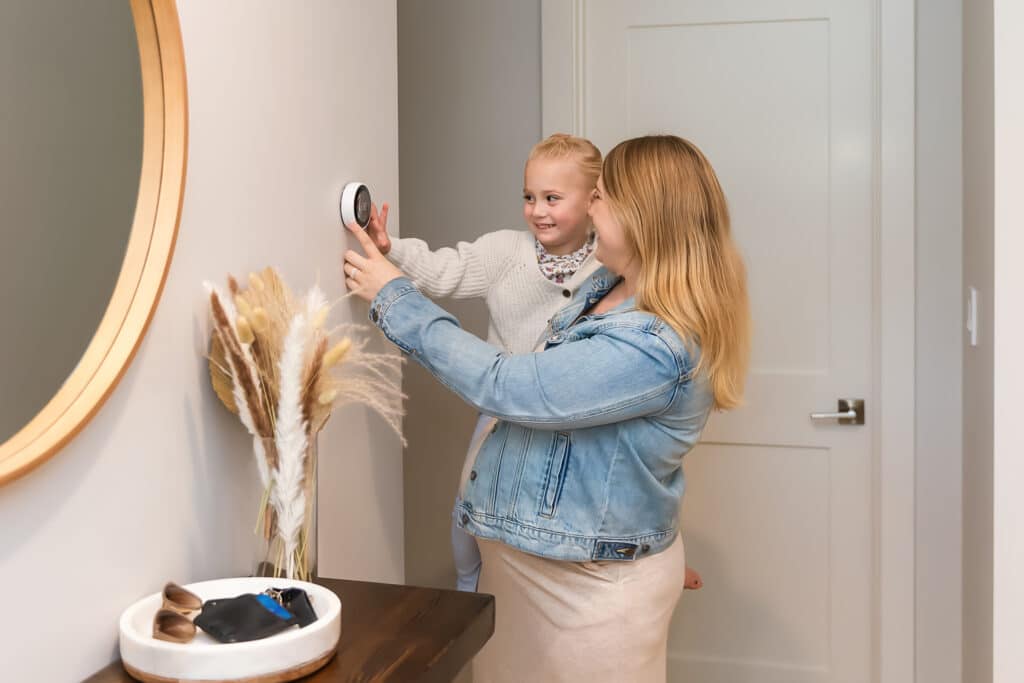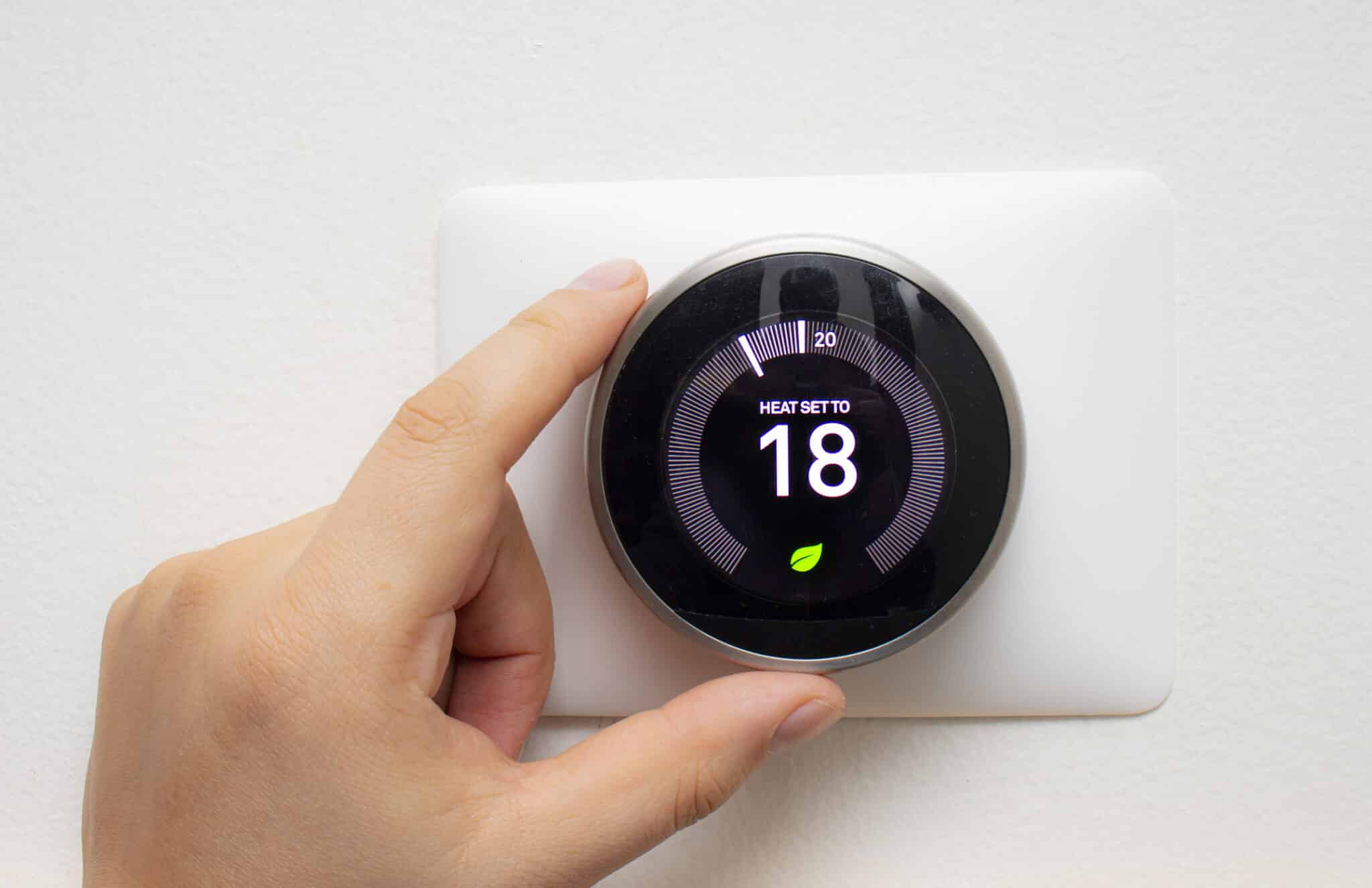
How to Prepare Your Thermostat for Cooler Texas Nights
- Thermostat Types: Manual, programmable, and smart thermostats each offer unique features that can enhance comfort and efficiency in your home.
- Compatibility: Ensure your thermostat works with your heating and cooling systems for optimal performance.
- Texas Climate Impact: Cooler nights in Euless, TX, can affect your thermostat’s efficiency, making proper preparation crucial.
- Common Issues: Avoid discomfort by checking for common problems like incorrect temperature settings or unresponsive thermostats.
- Firmware Updates: Keeping your smart thermostat updated ensures it runs smoothly, with the latest features and fixes.
- Energy Savings: Optimize your thermostat settings to save energy while maintaining comfort during cooler nights.
Have you ever wondered if your thermostat is running efficiently during those cool Texas evenings? Understanding how it operates can make a big difference in maintaining a comfortable and energy-efficient home. From manual settings to advanced programmable options, there are plenty of ways to control your home’s temperature effectively.
It’s important that your heating and cooling system is properly configured. If it’s not set up correctly, your system may struggle to maintain the right temperature, leading to higher energy costs and discomfort. Preparing for the cooler months ahead can help avoid these issues and ensure everything runs smoothly when you need it most.

Why Proper Thermostat Preparation is Crucial in Euless, TX
In Euless, TX, unpredictable nighttime temperature drops make it crucial to prepare your heating system. Cooler nights can place extra strain on your setup, leading to inefficiency, discomfort, and higher energy bills.
Common issues like incorrect temperature settings or an unresponsive system can be easily avoided with proper preparation. By ensuring your thermostat is ready for these fluctuations, you can maintain comfort while conserving energy. In Euless, getting everything configured correctly not only enhances your comfort but also protects your budget.
Check Your Thermostat’s Current Settings
Before the cooler Texas nights set in, it’s important to review your thermostat’s current settings. This simple step can make a big difference in how comfortable your home feels and how efficiently your heating system runs.
Start by reviewing your temperature schedules. Make sure your thermostat is programmed for the cooler months, with temperature settings that align with your daily routine. Many homeowners forget to adjust their thermostats as the seasons change, which can lead to unnecessary energy use.
Next, check that your thermostat is set to “Heat” mode. It’s easy to overlook this setting, especially if your system has been cooling your home during the warmer months. Switching to “Heat” mode ensures your heating system is ready to respond when the temperature drops.
Update Your Thermostat’s Firmware
If you have a smart thermostats, keeping its firmware up to date is crucial for optimal performance, especially during cooler nights in Texas. Firmware updates often include new features, security enhancements, and bug fixes that can improve your thermostat’s efficiency and reliability.
Check for updates by accessing your thermostat’s settings through its app or directly on the device. Many smart thermostats will notify you when an update is available, but it’s a good habit to manually check before the cooler weather sets in.
Once you locate the update option, follow the prompts to download and install the latest firmware. This process usually takes just a few minutes but can significantly enhance your thermostat’s capabilities, ensuring it operates smoothly throughout the season.
Optimize Energy Savings During Cooler Nights
As the nights get cooler in Texas, adjusting your thermostat settings can help you save on energy costs while keeping your home comfortable. One of the easiest ways to do this is by setting the ideal temperature range for nighttime. Experts recommend keeping your thermostat between 60 to 67 degrees Fahrenheit while you sleep. This range is not only energy-efficient but also conducive to better sleep.
For smart thermostats users, take advantage of eco modes and geofencing features. Eco mode automatically adjusts the temperature to save energy when you’re not home or when you’re asleep. Geofencing uses your smartphone’s location to detect when you’ve left home, adjusting the thermostat accordingly to prevent unnecessary heating.
These small adjustments can lead to significant energy savings over time, all while ensuring your home stays warm and comfortable during the cooler Texas nights.
Thermostat Features to Maximize Comfort
To make the most of your thermostat during cooler Texas nights, it’s important to understand and utilize its features designed for comfort and efficiency. If you have a programmable thermostat, setting up a schedule can help you automatically adjust temperatures based on your daily routine. For instance, you can program it to lower the temperature when you’re asleep and warm up the house just before you wake up.
Smart thermostats take comfort a step further with adaptive and learning capabilities. These devices learn your habits over time and adjust the temperature to match your preferences without you having to lift a finger. They also factor in weather conditions, ensuring your home is always at the ideal temperature, regardless of sudden changes in outside weather.
By leveraging these features, you can maintain a cozy home environment and improve energy efficiency, even as temperatures drop.

Smart Thermostat Tips for Texas Winters
As Texas winters can be unpredictable, your smart thermostat can be an invaluable tool for managing comfort and efficiency. Here are some tips to get the most out of it during the cooler months:
- Adjust for Fluctuating Temperatures: Texas weather can shift quickly. Use your thermostat’s weather tracking feature to automatically adjust indoor temperatures based on outdoor conditions. This keeps your home comfortable without the need for constant manual changes.
- Remote Management via Smartphone Apps: One of the best features of smart thermostats is the ability to control them remotely through smartphone apps. Whether you’re at work or away on vacation, you can adjust your home’s temperature with just a few taps, ensuring it’s warm when you arrive home.
- Create Custom Schedules: Set specific schedules that lower the temperature when you’re not home or when you’re sleeping. This not only saves energy but also prevents your heating system from working harder than it needs to.
How to Troubleshoot Common Thermostat Problems
Even with the best preparation, thermostat issues can still arise, especially during colder nights. Here’s how to troubleshoot some common problems:
- Diagnosing Unresponsive Thermostat: If your device isn’t responding, start by checking the batteries, as low or dead batteries are often the cause. If the batteries are fine, try turning the system off, waiting a few minutes, and turning it back on. Persistent issues could point to wiring problems or a malfunction with the HVAC system.
- Fixing Incorrect Temperature Readings: If the device isn’t accurately reflecting the indoor temperature, poor placement could be the issue. Ensure it’s not near windows, doors, or direct sunlight, as these can skew the readings. If placement isn’t the problem, recalibration may be necessary through the settings menu.
- Ensuring Proper Thermostat Calibration: Over time, thermostat can fall out of calibration, leading to inaccurate temperature readings. Refer to the manual for recalibration steps, which usually involve adjusting the temperature reading to match a reliable thermometer in the same room.
By addressing these common issues, you can ensure your thermostat continues to function correctly, keeping your home comfortable throughout the winter.
Ensuring Proper Thermostat Calibration
Proper calibration is essential for your thermostat to maintain accurate temperature settings, especially during colder Texas nights. If your thermostat is not correctly calibrated, it may cause your heating system to run inefficiently, leading to discomfort and higher energy bills.
Steps to Recalibrate Your Thermostats:
- Check the Temperature: Place a reliable thermometer next to your thermostat and compare the readings. If there’s a noticeable difference, recalibration is needed.
- Follow the Manufacturer’s Instructions: Most thermostats can be recalibrated through their settings menu. Refer to the user manual for specific instructions on how to adjust the temperature reading.
- Test the Calibration: After adjusting, allow your thermostat to run for a few hours, then recheck the temperature to ensure accuracy.
Signs of Miscalibration:
- Inconsistent room temperatures.
- The heating system runs longer than necessary.
- High energy bills without a clear reason.
Regularly checking and recalibrating your thermostat ensures it operates efficiently, helping you stay warm without wasting energy.
Seasonal Maintenance: Preparing Your HVAC System
As cooler weather approaches in Texas, it’s essential to prepare your HVAC system to ensure it runs efficiently throughout the winter. Regular maintenance not only keeps your system in top shape but also helps prevent unexpected breakdowns on those cold nights.
- Check the Furnace and Heating Systems: Before the cold sets in, inspect your furnace and heating systems for any signs of wear or malfunction. Turn on the heat to ensure it’s working properly and listen for any unusual noises, which could indicate a problem. If you notice anything off, consider scheduling a professional inspection.
- Replace Air Filters: A dirty air filter can restrict airflow, forcing your heating system to work harder and less efficiently. Make it a habit to replace your air filters regularly, especially before the start of the heating season. Clean filters ensure better air quality and help your system run smoothly.
- Ensure Clear Airflow: Walk around your home and check that all vents and registers are clear of obstructions, such as furniture or curtains. Blocked vents can prevent heat from circulating properly, leading to uneven temperatures and wasted energy.
Taking these steps will help your HVAC system perform at its best, keeping your home warm and comfortable during the cooler Texas months.
Preparing for Emergencies: Backup Heating Solutions
Texas winters can be unpredictable, with sudden cold snaps and power outages. Preparing backup heating solutions ensures your home stays warm even in emergencies.
- Use Space Heaters Safely: Space heaters are a quick way to heat a room during a power outage or if your main heating system fails. However, safety is key. Always keep space heaters at least three feet away from flammable materials, and never leave them unattended. Choose models with automatic shut-off features to prevent overheating or tipping.
- Plan for Power Outages: Invest in a generator if you live in an area prone to power outages. A portable generator can power your heating system and keep essential appliances running. Make sure to store extra fuel safely and know how to operate the generator before an emergency arises.
- Layer Up and Use Insulating Techniques: In case of an extended outage, have plenty of blankets and warm clothing on hand. You can also insulate your home by sealing drafts with weatherstripping and using heavy curtains to retain heat.
Energy Efficiency Tips Specific to Euless, TX Homes
Maximizing energy efficiency in your Euless, TX home is crucial, especially during cooler nights when heating costs can rise. Implementing a few targeted strategies can make a significant difference in your energy bills and overall comfort.
- Insulation Checks and Improvements: Proper insulation is key to maintaining a warm home. Inspect your attic, walls, and floors for adequate insulation. If your home is older or you’ve noticed drafts, consider adding more insulation to reduce heat loss. This is a cost-effective way to improve your home’s energy efficiency.
- Sealing Drafts: Drafty windows and doors can let cold air in and warm air out, making your heating system work harder. Use weatherstripping or caulk to seal any gaps around windows, doors, and other openings. Even small cracks can lead to significant heat loss, so be thorough in your inspection.
- Window Treatments: Heavy curtains or thermal drapes can help keep the warmth inside your home. Close them at night to add an extra layer of insulation. During the day, open them to let in sunlight, which can naturally warm your home.
The Benefits of Regular Thermostats Maintenance
Regular thermostat maintenance is essential not just for comfort but also for the longevity and efficiency of your HVAC system. Taking the time to perform simple maintenance tasks can save you from costly repairs and high energy bills down the road.
- Extending the Lifespan of Your HVAC System: A well-maintained thermostat ensures that your HVAC system doesn’t work harder than necessary. By keeping your thermostat clean, recalibrated, and up to date with firmware, you reduce the strain on your heating and cooling systems. This prolongs their lifespan and prevents premature wear and tear.
- Preventing Unexpected Breakdowns: Routine checks of your thermostat can help you catch potential issues early. For example, if you notice erratic temperature readings or unresponsiveness, addressing these problems quickly can prevent them from escalating into bigger issues, like a complete HVAC breakdown during a cold night.
- Improving Indoor Air Quality: Regular maintenance, such as replacing air filters and ensuring proper calibration, contributes to better air circulation and filtration. This helps in reducing allergens, dust, and other airborne particles, leading to improved indoor air quality and a healthier living environment.
The Role of Humidity Control
Humidity plays a significant role in how warm or cool your home feels, especially during the winter months in Texas. Managing indoor humidity can improve comfort and enhance your heating system’s efficiency.
- How Humidity Affects Heating Efficiency: Low humidity levels can make your home feel colder than it is. Dry air causes moisture to evaporate from your skin more quickly, which can leave you feeling chilled even at higher temperatures. This often leads to turning up the heat, which increases energy usage and costs.
- Using Thermostat-Linked Humidifiers: If your thermostat has a built-in humidifier or can connect to one, this feature can be invaluable during the winter. Maintaining an indoor humidity level between 30% and 50% helps your home feel warmer and more comfortable at lower temperatures, reducing the need to crank up the heat. Smart thermostats can monitor humidity levels and adjust them automatically, ensuring optimal comfort.
By controlling humidity in your home, you can achieve a more comfortable environment while also keeping heating costs in check during the cooler Texas nights.
Leveraging Thermostat Data for Long-Term Savings
Smart thermostats offer valuable data that can help you optimize energy use and save money in the long run. By analyzing this data, you can make informed decisions about how to adjust your heating habits.
- Reviewing Usage Reports and Energy Bills: Many smart thermostats provide detailed reports on your heating and cooling patterns. Reviewing these reports regularly can highlight trends in your energy use. For example, you might notice that your heating system runs more frequently at certain times of day. Understanding these patterns allows you to adjust your thermostat settings to reduce unnecessary energy consumption.
- Making Adjustments Based on Data Insights: Use the data from your thermostat to tweak your temperature settings. For instance, if the data shows that your home retains heat well overnight, you might be able to lower the temperature a few degrees while still staying comfortable. Small adjustments like these can add up to significant savings over time.
FAQs
-
What temperature should I set my thermostat at night in Texas?
Setting your thermostat between 60 to 67 degrees Fahrenheit at night is ideal for both comfort and energy efficiency. This range keeps you warm without wasting energy.
-
How often should I check my thermostat settings?
You should review your settings at the start of each season and make adjustments as needed. Additionally, check after any firmware updates or significant weather changes.
-
Can a smart thermostat really save money on heating bills?
Yes, smart models can significantly reduce heating bills by automatically adjusting the temperature based on your schedule, weather conditions, and energy use patterns.
-
What should I do if my thermostat is unresponsive?
First, check the batteries and replace them if needed. If it’s still unresponsive, try resetting it. If problems persist, it could be a wiring issue or a problem with your HVAC system.
-
How can I improve my home’s energy efficiency during cooler nights?
Improve energy efficiency by sealing drafts, ensuring proper insulation, using heavy curtains, and maintaining your heating system. Also, consider using features like eco mode and geofencing.


